Help Choosing Large Binoculars for Astronomy
This week’s question comes from Rich, a new BBR Patreon supporter who has always been interested in astronomy and wants to get some binoculars for astronomy and deep-space observation in particular. Please note that I have slightly paraphrased the question as the letters were very long, but have kept what is relevant:

Question
My name is Rich Strassberg. I am 76 years old and have been interested in Astronomy for decades; however, I’ve never purchased any equipment. I have a pair of Bushnell 7x35 binoculars, that were handed down to me a long time ago. I lived in Venice, California most of my life. I also lived in the Monterey Bay Area for around ten years.
When I researched equipment, I was always around the coast and had the marine layer and light pollution to contend with; therefore, I never went forward in purchasing equipment. During those times, I wanted to get a Celestron 9.25, with a bino viewer, Televue eyepieces, and a really good equatorial mount and tripod. What I wanted was going to cost a lot!
Here in Mississippi, there is the constant humidity factor and over 50 inches of rain per year. During the fall and winter, a lot of nights are great for stargazing. My binoculars always leave me wanting more. I wear glasses and have astigmatism and large floaters that are noticeable when moving my eyes to the side; however, I don’t view with my glasses. I’ve never been to a dark site yet, but there’s one listed about ten miles away.
Recently, I’ve been in touch with an Astronomy professor and a couple of members of The Memphis Astro Society, and a repair person for Fujinon. I’ve received various information, but after viewing your YouTube video review on the Kite IS binocular and reading some of your links, decided that you would be the best person for advice.
I thoroughly enjoyed your video, the detail, and the links that you offer. I know that I will go back and look at all of your videos and subscribe.
Your approach to sharing information is greatly appreciated. It’s precise and concise; however, it’s a ton of information…like an encyclopedia!
I have studied telescopes and binoculars, have all kinds of iPhone astronomy apps, read reviews, and discussions regarding various topics on Cloudy Nights. So, I have a lot of so-called information in my head! When I reached out to one of the Memphis people, he understood everything that I just told you, plus this:
I want to do DSO (Deep Space Object) observations at a dark site with binoculars and an Orion Monster Parallelogram Binocular Mount and Tripod.
I looked at the Orion BT100 models, with interchangeable eyepieces. Then, I was told by some that the amount of humidity would be a problem. Although the guy from Memphis has all of these types of binoculars, he suggested what he uses the most…the Canon IS 15x 50.
That’s what prompted me to look at your video! He also, played down the Fujinon 16x70 based on the small amount of eye relief, and10x70 due to the exit pupil size of someone my age. He suggested the APM 16x70 ED, which has eye relief at 20mm.
So, this is where I’m at! I have all of these factors, plus FOV and probably others I’m not aware of. I don’t want to lug around a telescope and all of the other equipment at my age and set it up and tear it down.
I know the Orion Monster Mount and Tripod equipment is heavy; however, it is stable and has the six movements, allowing me to lie down on a lounge chair, sit or stand.
I feel that I’m probably going to end up with something similar to the APM binos, but not sure which configuration would be correct for my personal needs. Also, can you give me any links to sites of pictures of what various DSOs look like through the various configurations? I’ve seen some, so I’m aware that they won’t large and colorful, like the stacked images in astrophotography.
Regarding exit pupil, at 76 years old: My understanding is that it should be around 4-5 m. So, when I calculate 16x70, it would be almost 4.4 m. With a 10x50, it would be 5 m. So, wouldn’t a 80x100, 20x100, or 25x100 work for me?
In terms of magnification, I realize that the FOV is diminished; however, wouldn’t I still be able to see the majority of DSOs within the view? Also, if I wanted to go with the Orion BT 100 with interchangeable eyepieces, wouldn’t a couple more pairs give me the variety of FOV?
Answer
Firstly many thanks for the kind words and for the Patronage, it is very much appreciated and certainly helps with the continuation of BBR.
I will do my best to help, but after reading your very in-depth emails, to me, it sounds like you know a whole bunch anyway and probably more than I do about astronomy for sure.
Exit Pupil, Magnification & Field of View
As well as many other aspects, the Exit Pupil, Magnification & Field of View are all linked and the more you pull in one direction, the more it affects the others.
You are right to mention that everyone’s maximum pupil size is not only a little different and that with age they may not be able to expand to the size they could when young.
In fact, it was only a couple of weeks ago that I answered a question about this for a reader which may be of interest to you: Does Age Affect Image Brightness in Binoculars?
I am not sure how much the maximum size reduces normally, but let’s assume that as you say, yours can now achieve between 4mm and 5mm – So yes then, if we assume all the rest is equal (in terms of the quality of the optics), something like a good quality 20x100, 15x80 or even a 20x80 or 25x100, should be fine and very likely not seem that much less bright (if at all) when compared to an equal binocular with a larger exit pupil.
Ease of Use
Just keep in mind though that larger exit pupils also make it easier to line up your eyes with and thus are just that bit easier to use and achieve an image without black rings on the edges.
For Deep Space Objects (DSO), you will want a high magnification to get the reach into space, but and as you already know, this will decrease the field of view and likely come with a larger lens so as to keep the exit pupil to a reasonable size – these large instruments generally cost more and are obviously larger and heavier.
Field of View (FOV)
The width of view you want or need depends on what you are observing, so if you are interested in viewing large constellations, then this will be an issue, but as for individual stars or star clusters, it will be fine and still generally be wider than what you will get with a more powerful telescope.
I find that the worst part of the reduced field on high-power binoculars is that it makes navigating the night sky more difficult for a novice like me. However, I still find it far easier than on a higher-powered telescope.
What You Can See – Image Detail
As for image detail, I am not sure what you are expecting. As you say in your letter, don’t expect anything like what you see in photographs created using stacked images.
In my limited experience, and depending on what you are looking for, it is often being able to observe a star or object that was either not possible to see with the naked eye or being able to detect what looked like a single star with the naked eye is actually a group or cluster.
But in general they still just look like stars. Only now you can see much further into space and thus binoculars enable you to discover new ones.
For me using binoculars to view the stars (and other DSO) is less about detail and more about the immediacy of it all: So I go from hearing about or learning about an object of interest, then research as to where to look for it, to searching for it, then hopefully discovering it in the sky, and viewing it “live”.
This is what I think is most interesting and makes me feel a part of the universe. If you want more detail, then a telescope and astrophotography is probably the way to go for an amateur.
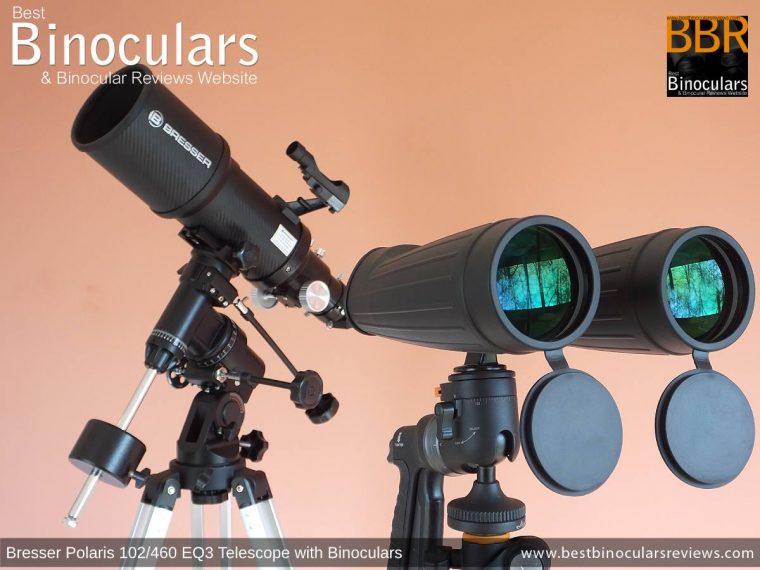
BRESSER Polaris 102/460 EQ3 Telescope with a pair of Bresser Spezial Astro 15x70 Binoculars
So because of this, I generally don’t go that large, powerful, or expensive when it comes to binocular astronomy and my current selection includes the following, all of which I have reviewed and would recommend within their class:
However, for DSO, you may wish to go bigger and more powerful. This could be in the form of even larger, very high-power binoculars, a telescope ( I have a Bresser Polaris Telescope), or indeed a spotting scope (more on this below).
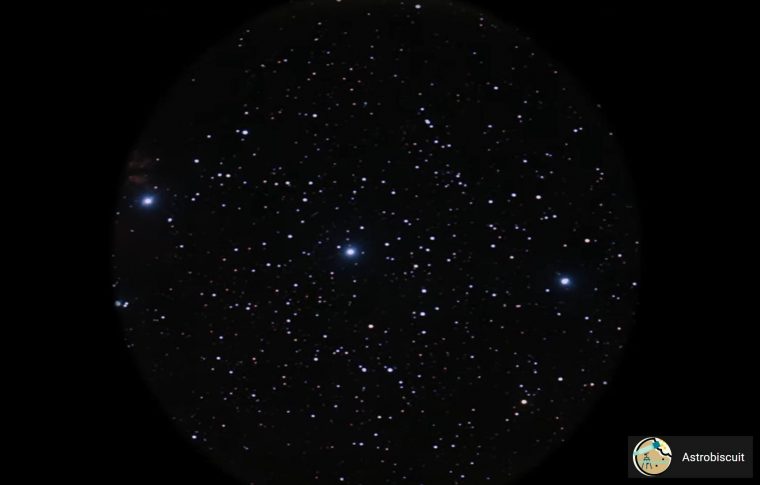
Simulation of the view of Orions Belt through 7x50 Binoculars
Example Images
As for images, sorry I don’t have any images as I have not got into astrophotography.. yet!
I do have an article with a video on what you can see with 7x50 binoculars which I would recommend taking a look at even though the 7x50 configuration is very different from the high power instruments you are interested in: Binocular Astronomy: What you can see with 7x50 Binoculars
Also, take a look at this article written for me by astronomer Philip Pugh which has some images that represent what you can expect to see with some different binocular configurations: The Beehive Cluster With Binoculars – Astronomy Series
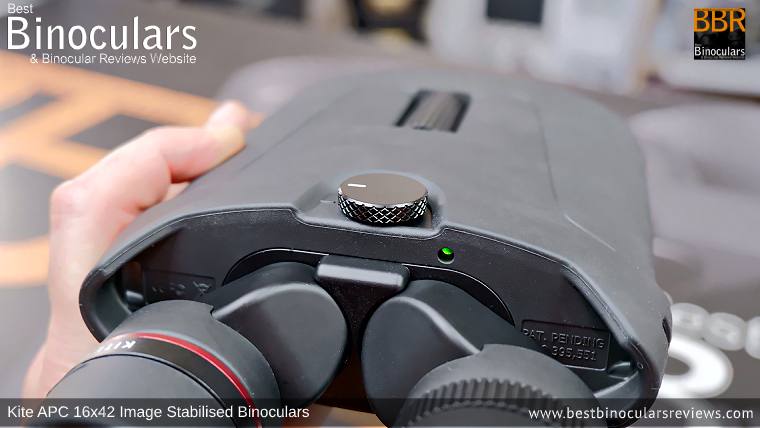
Image Stabilized Binoculars for Astronomy
Yes, these, especially the Canon series of IS binoculars have become popular for astronomy and I recently had an excellent experience with the Kite APC 16x42 Image Stabilised Binoculars. I also know that there are a lot of people who swear by using image stabilization binoculars for astronomy.
Advantages
However, just keep in mind that they won’t give you a better view than an equivalent non IS binocular. The advantage they have over a standard binocular is that you don’t HAVE to use a tripod and thus makes transportation and ease of setup much easier.
Disadvantages
The downsides are you pay for this convenience and without a tripod, you can’t direct the view at an object and have it remain there, either to come back to later (after a little more checking and research), or share with others when you are certain that you are looking at the right object.
So as with everything, there are pros and cons and nothing is perfect! You just need to establish what is best suited to your needs, your budget, and how you pant to use them.
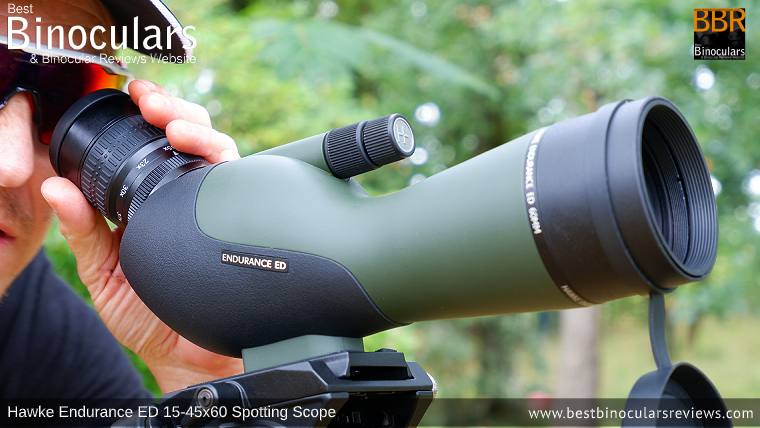
No to Telescopes – How about a Spotting Scope?
I know you say that you don’t want to lug around a telescope and all of the other equipment, which I totally understand and indeed is the main reason I generally prefer the simplicity of a binocular as well.
However, have you considered using a spotting scope?
Generally, they are nowhere near as heavy or cumbersome as a large telescope and I find are easier to set up. Also being essentially half a binocular, they are usually less bulky and more lightweight than a binocular with equivalent-sized objective lenses.
Other advantages include the ability to easily swap eyepieces (if you get a decent scope), they often come with a variable magnification eyepiece that allows you to start searching at lower power, with a wider field of view which I find greatly helps with night sky orientation and navigation and then once you are in the right area you can crank up the power and zoom into whatever you are interested in.
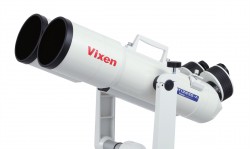
Another major advantage of using a spotting scope for astronomy is that unlike binoculars (except for a few exceptions like the excellent, but very expensive Vixen BT Astronomical binoculars and a few other binocular telescopes out there), most spotting scopes now come with angled eyepieces that make it much easier to look upwards into the sky.
The downside to spotting scope astronomy versus binocular astronomy and indeed, in general, is that with only one objective lens, you get less light gathering capability and by using only one eye, I find the experience to be less immersive.
Like binoculars, there is a whole range in terms of sizes to choose from.
So you could go BIG with something like the excellent Celestron Regal 100mm F-ED that I tested many years ago (so the review is not up to my current standards sorry), but still, rate very highly and comes with a 22x-67x Zoom Eyepiece giving you a massive range and way more power than a binocular can.
However, it is large and pretty heavy.
Go down a size to something like the Hawke Endurance ED 20-60x85 Spotting Scope or Bresser Pirsch Gen II 20-60x80 and you still get a 20-60x range in terms of magnification.
Or you could go even smaller with a 50mm to 60mm travel scope that can range in power anywhere from 9x up to about 54x.
Just keep in mind that with the smaller lens you get far less light-gathering ability, but they can be very easy to carry about and indeed I’m planning on taking one (the tiny Bresser with me on some lightweight hiking and bikepacking trips I have planned where I will certainly use them at night for viewing the heavens, however, these are probably a little small if astronomy is your main interest, rather take a look at the Hawke Endurance ED 15-45x60 as a good example of a fairly compact scope that can certainly be used for astronomy.
Anyway, I am going to leave it there for now to give you time to take a look and wait for your feedback.
Thanks again and I look forward to continuing to work with you to find your ideal set.
Speak soon,
Jason

 Article | Posted by Best Binocular Reviews
Article | Posted by Best Binocular Reviews 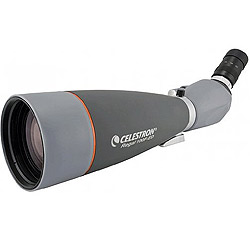

 Categories:
Categories:  Tags:
Tags: 
